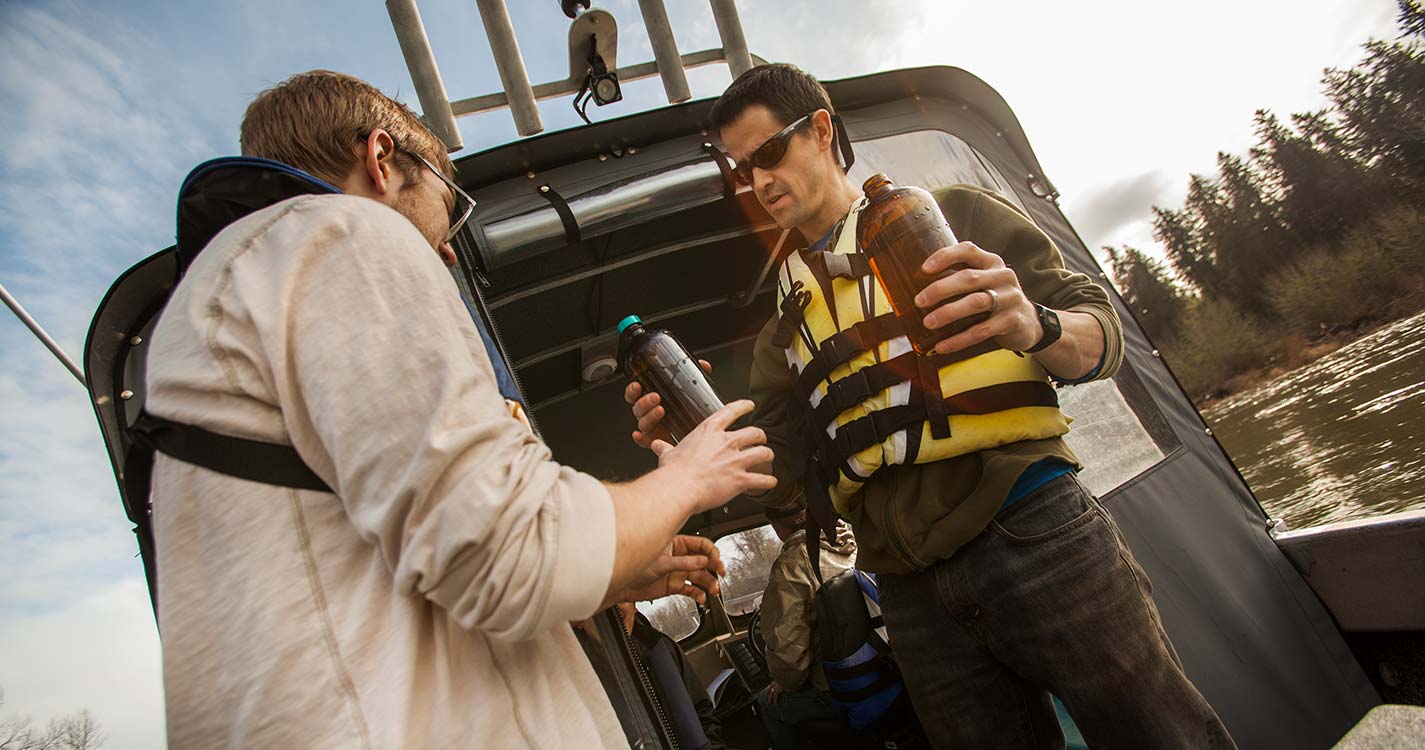Keeton Nance ’19 clicked on the title page of a well-known environmental science journal in his inbox and excitedly scanned the text.
He spotted a familiar name — Assistant Professor of Chemistry David Griffith — then his own, along with students Reid Milstead ’18, Kulananalu Tarnas ’16, Kira Egelhofer ’15. Nance was looking at the first draft of an 11-page research paper he and the others co-authored — the culmination of years of work.
“I was ecstatic,” he says. “I felt really proud of my contribution and that of my co-authors, and I felt really lucky to have had the opportunity to publish.”
On Sept. 13, Environmental Science: Processes & Impacts published their paper, titled “Photochemical degradation of halogenated estrogens under natural solar irradiance,” and featured the title inside its front cover alongside artwork by Eurydice Chen ’19.
Griffith says, "At Willamette, undergraduates play a more central role in the research overall — from conducting experiments to data analysis and presenting information at conferences — and can interact more directly with faculty than they can at larger institutions."
The students benefited in other ways, too. National Public Radio featured their research Nov. 2 during a segment for PRI’s environment podcast, “Living on Earth,” and Nance last month presented his research at the Murdock College Science Research Conference in Vancouver, Washington.
Research with an impact
Over the past few years, Griffith’s students have been studying halogenated estrogen, a form of the hormone created during the chlorine disinfection stage at treatment plants, with the help of a $325,000 grant from the National Science Foundation.
Scientists are concerned about the impact of estrogen on the environment. Even small amounts of it can disrupt the growth and development of aquatic organisms, causing some male fish to develop ovaries — and little is known of its impact on humans.
For the research paper, students focused on how quickly this form of estrogen degrades under sunlight to better understand the overall impact of estrogen contamination. On sunny days last summer, students set tubes holding different types of halogenated estrogen on the roof of Collins Hall then measured the amount of the hormone over time.
Students discovered halogenated estrogen degrades more quickly in the sun, which means that exposing it to solar rays could ameliorate its rapid formation during the waste treatment disinfection process.
Their research has great potential beyond possibly shaping how wastewater facilities treat water in the future. Griffith says it also sheds light on the behavior of a range of other pharmaceuticals and contaminants that share similar structural features with estrogens.
Several natural and manufactured chemicals, including ones found in microwavable dishes, Tylenol and some types of detergents, possess the same feature that make estrogens susceptible to degradation by sunlight. So, sunlight can also cause a quicker degradation of these chemicals when they turn up in wastewater.
Research at Willamette opens doors to students' future. Experiments Nance conducted last summer through the university’s Science Collaborative Research Program, similar to his work for Griffith’s grant, made him eligible for the Murdock conference and others.
“Setting up experiments, struggling with setbacks, presenting at conferences and publishing articles is paramount in scientific careers,” he says, “so it is really useful to get a taste of what graduate school and a career in academia might be like before we even start applying to grad schools.”


